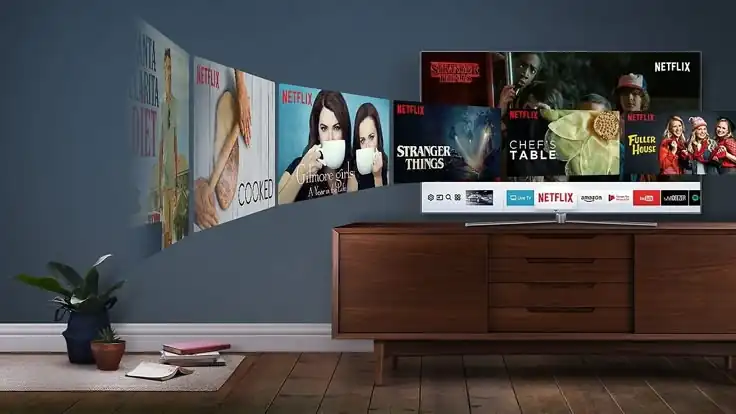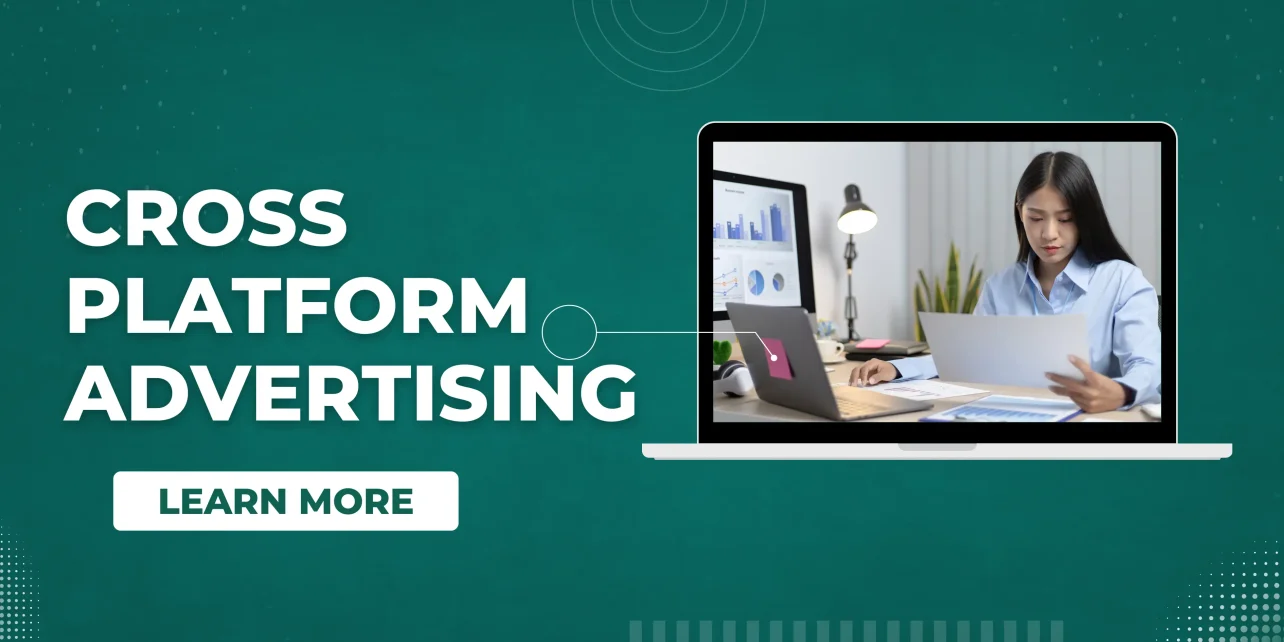Introduction to Cross-Platform Advertising in 2025
In 2025, advertising is no longer about being present on just one platform—it’s about being everywhere your audience spends time. With people shifting rapidly between websites, mobile apps, YouTube, and social platforms, cross-platform advertising has become the ultimate growth driver. Google Ads has emerged as the most powerful cross-platform advertising solution, connecting the web, apps, and social channels into one seamless journey.
According to a Statista report, global digital ad spending will surpass $740 billion in 2025, with more than 60% of that budget allocated to cross-platform campaigns. Businesses that fail to connect their web and app strategies with Google Ads risk losing conversions and falling behind competitors who embrace connected advertising.
Why Cross-Platform Advertising Matters for Marketers
Traditional advertising often struggled with fragmented user journeys. A user might click on a Google search ad but drop off when redirected to an app or social channel. In 2025, cross-platform advertising eliminates this disconnect by unifying the experience across web, apps, and social platforms.
For marketers, this means:
- Better reach: Engage users across devices without losing visibility.
- Improved ROI: Unified campaigns cut down wasted ad spend.
- Seamless conversions: From discovery on Google to conversion inside an app or site.
Businesses building OTT platforms, VOD apps, or live streaming services are especially benefiting, since audiences often discover content on the web but consume it in apps or social environments.
Evolution of Google Ads: From Search to Cross-Platform Powerhouse
Google Ads started as a simple search-based text ad platform in 2000. Fast forward to 2025, and it has transformed into a cross-platform ecosystem powered by AI, machine learning, and predictive analytics.
Now, Google Ads connects:
- Search Ads → Capturing high-intent traffic.
- Display Ads → Retargeting across web and mobile.
- YouTube Ads → Video-driven storytelling at scale.
- App Campaigns → Promoting downloads and in-app engagement.
- Shopping & Performance Max Campaigns → Unified multi-channel optimization.
This evolution is what makes Google Ads the go-to advertising solution for businesses launching OTT platforms, apps, and streaming services.
Google Ads and the Shift Toward Connected Experiences
Today’s consumers expect a connected, personalized journey. They might search for a video streaming app on Google, see an ad on YouTube, then finally download the app after seeing a retargeted ad on Instagram. Google Ads in 2025 makes this flow seamless.
With Performance Max campaigns, marketers can connect web, app, and social experiences in one place. This integration ensures that no matter where users are, they see consistent messaging that nudges them closer to conversion.
Web-to-App Integration: Driving Seamless Conversions
One of the most powerful features in 2025 is Google Ads Web-to-App Connect. This feature bridges the gap between desktop/mobile web discovery and app engagement.
For example:
- A user clicks a Google ad on mobile web → directed to the app download page.
- If the app is already installed → they’re taken straight to the in-app page.
- App installs, signups, and purchases are all tracked seamlessly.
This matters for OTT platforms and video streaming apps, where a large percentage of users browse on web but prefer consuming content in apps. According to Google’s 2025 Ads Report, web-to-app campaigns can increase conversions by up to 30% compared to standard campaigns.
Social Media and Google Ads: A Unified Advertising Approach
While Google dominates search and display, social media platforms like YouTube, Instagram, and TikTok remain critical for brand engagement. In 2025, Google Ads integrates more closely with social channels, allowing advertisers to build campaigns that follow the user journey across all touchpoints.
For example:
- A viewer discovers your video streaming app via a YouTube ad.
- Later, they see a retargeted ad in Google Display or on Instagram.
- Finally, they complete the download or subscription inside your OTT app.
This unified advertising loop is what makes cross-platform strategies so powerful in 2025.
The Role of AI and Machine Learning in Cross-Platform Ads
AI is at the heart of Google Ads optimization in 2025. From predictive bidding to personalized creative recommendations, AI ensures that your ads reach the right person, on the right device, at the right time.
Key AI features include:
- Predictive targeting: Using browsing and behavioral data to forecast user intent.
- Automated bidding: Adjusting ad spend in real time for higher ROI.
- Dynamic creative optimization: Personalizing ad creatives based on user profile.
For OTT platforms, AI-powered ads mean smarter recommendations—like showing a sports fan ads for a live streaming subscription right before a major match.

Personalization and GEO-Targeting with Google Ads in 2025
In a world of ad fatigue, personalization is the only way to stand out. Google Ads now uses GEO-targeting and contextual data to deliver hyper-relevant messages.
For example:
- A user in New York searching for fitness OTT platforms will see a different ad than a user in Tokyo searching for live sports apps.
- Localized creatives + local currency pricing = higher conversion rates.
According to Google’s ad performance study, personalized cross-platform ads have a 1.5x higher click-through rate (CTR) compared to generic ads.
Smart Bidding Strategies for Multi-Channel Campaigns
Smart bidding has matured in 2025, allowing advertisers to optimize campaigns across web, app, and social simultaneously. Instead of managing separate budgets, Google Ads allocates spend dynamically based on real-time performance.
For OTT and VOD platforms, this ensures that ad spend isn’t wasted. For instance, if users in one region convert better via YouTube than search, Google Ads shifts more budget there automatically.
Video Ads and YouTube in the Cross-Platform Mix
YouTube remains the crown jewel of video advertising. With over 2.9 billion monthly users in 2025, YouTube ads are central to any cross-platform strategy.
- TrueView Ads: Engage users with skippable ads.
- YouTube Shorts Ads: Perfect for OTT and short video streaming platforms.
- Connected TV Ads: Reaching audiences on Smart TVs and OTT devices.
For streaming companies, YouTube ads are the best way to showcase trailers, teasers, or live event promotions that drive app downloads.
Analytics and Attribution: Tracking Cross-Platform Success
One of the biggest challenges in advertising is tracking attribution across devices. Google Ads 2025 solves this with cross-platform attribution models.
You can now:
- See the full journey from web → app → in-app purchase.
- Attribute conversions correctly even if users switch devices.
- Measure ROI across all Google and partner networks.
This level of transparency ensures advertisers know exactly where their budget delivers the most impact.
Overcoming Challenges in Cross-Platform Advertising
While powerful, cross-platform advertising isn’t without challenges. Marketers often face:
- Data privacy regulations (GDPR, CCPA, etc.)
- Attribution complexity when users switch devices.
- Creative fatigue if the same ad repeats too often.
In 2025, Google Ads addresses these with privacy-first AI models, frequency capping, and improved attribution tracking.
Case Studies: Brands Winning with Cross-Platform Google Ads
- OTT Sports Streaming App → Increased app installs by 40% using Web-to-App Connect.
- E-commerce VOD Platform → Boosted subscription revenue by 32% with AI-powered bidding.
- Gaming App → Reduced customer acquisition cost by 25% through YouTube Shorts ads.
These case studies highlight how Google Ads is no longer just about clicks—it’s about cross-platform growth.
Cost Optimization and ROI in Multi-Channel Campaigns
In 2025, ROI is the ultimate metric. Google Ads helps optimize cost per acquisition (CPA) and maximize return on ad spend (ROAS).
According to Google’s internal data, advertisers using Performance Max campaigns see an average 20% lift in conversions at the same or lower CPA compared to single-channel campaigns.
For OTT platforms and streaming services, this translates to faster subscriber growth with controlled ad costs.
Future Trends in Cross-Platform Advertising with Google Ads
Looking ahead, Google Ads is set to evolve further with:
- AR & VR ads → Interactive experiences for streaming and gaming platforms.
- Deeper social integrations → TikTok + Google Ads partnerships.
- Voice search advertising → Ads optimized for Google Assistant.
- AI-powered predictive audiences → Anticipating user needs before they search.
Marketers who adopt these trends early will dominate cross-platform engagement.
Conclusion: Why Marketers Must Go Cross-Platform in 2025
The future of advertising is connected, intelligent, and seamless. Google Ads in 2025 is no longer just a search tool—it’s the bridge that connects web, app, and social into one ecosystem.
For OTT platforms, VOD apps, and streaming services, embracing cross-platform Google Ads strategies is no longer optional—it’s the only way to compete and grow. By leveraging AI, smart bidding, and Web-to-App Connect, businesses can maximize ROI, drive conversions, and build lasting customer relationships.
👉 In 2025, the winners in advertising will be those who go beyond single-channel campaigns and embrace the power of Google Ads cross-platform advertising.


No comments yet